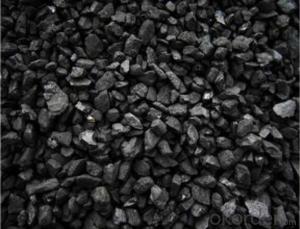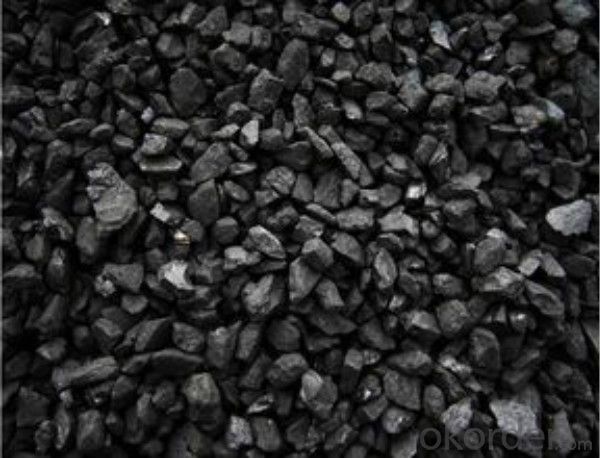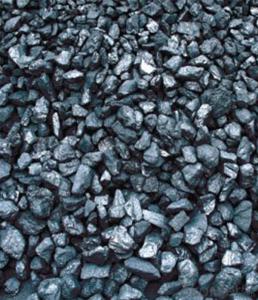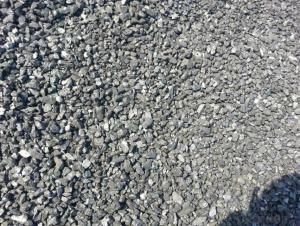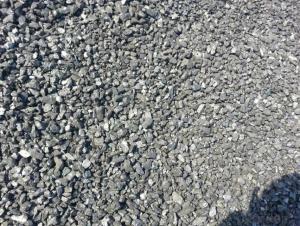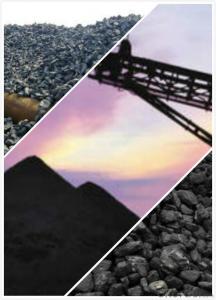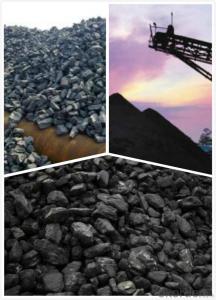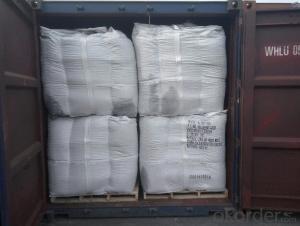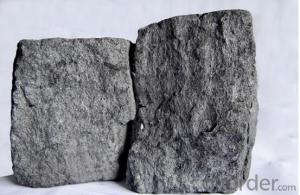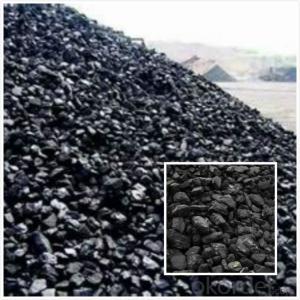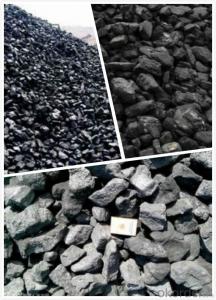90-120mmFoundry Coke Manufactured in China in High Quality
- Loading Port:
- Tianjin
- Payment Terms:
- TT OR LC
- Min Order Qty:
- 1200 m.t
- Supply Capability:
- 20000 m.t/month
OKorder Service Pledge
OKorder Financial Service
You Might Also Like
Product Introduction
Foundry Coke is a kind of main raw materials used for steel making, we have own coke plants at Shanxi province with output 2 million MT.The coke is made from superior coking coal of Shanxi province. Provided with the dvantages of low ash, low sulphur and high carbon.Our coke is well sold in European,American,Japanese and South-east Asian markets.
Features
This is a special coke that is used in furnaces to produce cast and ductile iron products. It is a source of heat and also helps maintain the required carbon content of the metal product. Foundry coke production requires lower temperatures and longer times than blast furnace coke.
Specification
Fixed Carbon | Sulphur Content | Moisture | V.Matter | Ash |
86%min | 0.7%max | 5%max | 1.2%max | 12%max |
88%min | 0.65%max | 5%max | 1.5%max | 10%max |
85%min | 0.8%max | 15%max | 2%max | 13.5%max |
Pictures

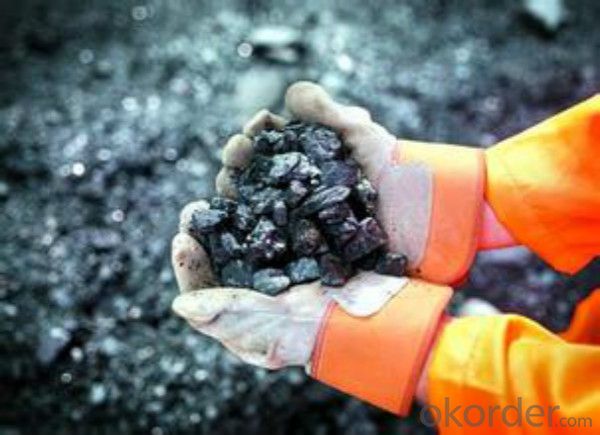
FAQ:
1 How long can we deliver the cargo?
Within 30 days after receiving the LC draft or down payment
2 Time for after-sales?
1 year.
3 Cutomized or general specfications?
Both are acceptable
4 Payment terms?
L/C,D/P, T/T with down payment
- Q: What are the health effects of carbon monoxide poisoning?
- Carbon monoxide poisoning can have serious health effects on the human body. When inhaled, carbon monoxide (CO) quickly enters the bloodstream and binds to hemoglobin, the oxygen-carrying component of red blood cells. This process reduces the blood's ability to transport oxygen throughout the body, leading to tissue hypoxia (oxygen deprivation). The symptoms of carbon monoxide poisoning can vary depending on the level and duration of exposure, but commonly include headache, dizziness, nausea, confusion, weakness, and shortness of breath. These symptoms can easily be mistaken for other illnesses, which makes carbon monoxide poisoning particularly dangerous, as it can go undetected until it reaches critical levels. In severe cases, carbon monoxide poisoning can lead to loss of consciousness, seizures, coma, and even death. Prolonged or repeated exposure to lower levels of carbon monoxide can cause long-term health issues, including memory problems, difficulty concentrating, mood changes, and cardiovascular complications such as heart disease. Certain populations are more vulnerable to the effects of carbon monoxide poisoning, including young children, pregnant women, the elderly, and individuals with pre-existing heart or lung conditions. Additionally, exposure to high levels of carbon monoxide in enclosed spaces, such as homes with faulty heating systems or car garages, can pose a significant risk. To prevent carbon monoxide poisoning, it is crucial to ensure proper ventilation in living spaces and regularly maintain fuel-burning appliances, such as furnaces, water heaters, and stoves. Installing carbon monoxide detectors in homes is also highly recommended, as they can provide an early warning of dangerous levels of the gas. If suspected of carbon monoxide poisoning, immediate action should be taken to remove oneself from the source of exposure and seek medical attention. Medical professionals may administer oxygen therapy to increase the blood's oxygen levels and facilitate the removal of carbon monoxide from the body. In conclusion, carbon monoxide poisoning can have severe health effects, ranging from mild symptoms to life-threatening conditions. Awareness, prevention, and prompt response are vital in protecting individuals from the dangers of carbon monoxide exposure.
- Q: What are the impacts of carbon emissions on coral reefs?
- Carbon emissions have significant impacts on coral reefs. One of the most significant consequences is the process of ocean acidification, caused by the absorption of excess carbon dioxide (CO2) from the atmosphere. As the ocean becomes more acidic, coral reefs struggle to build and maintain their calcium carbonate skeletons, essential for their structure and survival. This can lead to reduced growth rates and weakened reefs, making them more susceptible to damage from storms, disease, and other stressors. Additionally, the rising ocean temperatures resulting from carbon emissions have led to widespread coral bleaching events. When corals experience prolonged exposure to high temperatures, they expel the symbiotic algae (zooxanthellae) living within their tissues, which provide them with essential nutrients and give them their vibrant colors. Without these algae, corals become pale or completely white, a phenomenon known as bleaching. If the stressors subside, corals can recover, but if the bleaching is severe or prolonged, it can lead to coral death and the subsequent degradation of the reef ecosystem. Furthermore, increased carbon emissions contribute to the intensification of storms and other extreme weather events, which pose a direct threat to coral reefs. Stronger storms can physically damage the reefs, breaking apart their fragile structures and reducing their resilience. The resulting sediment runoff from land, often exacerbated by storms, can smother corals and hinder their ability to feed and grow. The impacts of carbon emissions on coral reefs are not only detrimental to these diverse marine ecosystems but also to the millions of people who depend on them for food, income, and coastal protection. Coral reefs support a vast array of marine life, provide a source of livelihood for many communities through fishing and tourism, and act as natural barriers against storm surge and coastal erosion. The degradation of coral reefs due to carbon emissions threatens the livelihoods and well-being of these communities, as well as the overall health and biodiversity of our oceans. To mitigate these impacts, it is essential to reduce carbon emissions by transitioning to cleaner, renewable energy sources, promoting sustainable practices on land to reduce runoff and pollution, and implementing effective management and conservation measures to protect and restore coral reef ecosystems.
- Q: What is the carbon content of different types of household waste?
- The carbon content of various household waste types can differ based on the specific materials being disposed of. Generally, organic waste, including food scraps, yard waste, and paper products, tends to have higher carbon content when compared to inorganic waste like glass, plastics, and metals. Food waste consists mainly of organic materials and possesses a significant carbon content, typically ranging from 50 to 70 percent. This is because food originates from plants and animals, which contain carbon-rich carbohydrates, proteins, and fats. Yard waste, such as grass clippings, leaves, and branches, also contains a substantial amount of carbon. It is composed of plant matter predominantly made up of carbon-based compounds like cellulose and lignin. The carbon content of yard waste can vary depending on the vegetation type, but it generally falls between 40 to 60 percent. Paper products, such as newspapers, cardboard, and office paper, are primarily manufactured from wood pulp. Wood consists of carbon-containing compounds like cellulose, hemicellulose, and lignin. Consequently, paper waste possesses a notable carbon content, typically ranging from 40 to 60 percent. On the other hand, inorganic waste materials like glass, plastics, and metals have minimal carbon content. These materials are mainly derived from non-renewable resources such as minerals and fossil fuels, which have low carbon content. As a result, their carbon content is negligible or close to zero. It is crucial to acknowledge that while organic waste contains higher carbon content, it also holds the potential for composting or conversion into biogas through anaerobic digestion, thereby contributing to carbon sequestration or renewable energy generation. In contrast, inorganic waste materials like plastics and metals are non-biodegradable and can have harmful environmental consequences if not managed properly.
- Q: How does carbon affect the formation of smog?
- Carbon plays a significant role in the formation of smog through the process of photochemical reactions. When carbon-based pollutants, such as automobile exhaust and industrial emissions, are released into the atmosphere, they can undergo reactions with other pollutants and sunlight. This leads to the production of ground-level ozone, a key component of smog. Additionally, carbon-containing compounds can contribute to the formation of particulate matter, which further exacerbates smog formation.
- Q: How does carbon dioxide affect textile production?
- Carbon dioxide can have various impacts on textile production. Firstly, the production of carbon dioxide during the manufacturing process of textiles contributes to the overall greenhouse gas emissions, which exacerbates climate change. This can lead to long-term consequences such as extreme weather events, rising temperatures, and sea-level rise, all of which can disrupt the supply chain and production of textiles. Moreover, carbon dioxide emissions from textile production contribute to air pollution, which can have adverse effects on human health. The release of this greenhouse gas can lead to respiratory problems and other respiratory diseases in workers exposed to high levels of carbon dioxide. Additionally, carbon dioxide is often used as a part of the dyeing and finishing process in textile production. This can have negative consequences for the environment as well. Carbon dioxide can contribute to water pollution when it is released into water bodies during the dyeing process, leading to the contamination of water sources and harming aquatic life. Furthermore, the excessive use of carbon dioxide in textile production can also have economic implications. As carbon dioxide is a byproduct of burning fossil fuels, its production is inherently linked to the consumption of non-renewable resources. The reliance on fossil fuels can make textile production vulnerable to price fluctuations, as the cost of carbon dioxide emissions and energy production can vary significantly. To mitigate the negative impacts of carbon dioxide on textile production, various measures can be taken. These include adopting cleaner production techniques and technologies that reduce carbon dioxide emissions, such as the use of renewable energy sources or implementing carbon capture and storage systems. Additionally, investing in sustainable and environmentally-friendly materials, such as organic cotton or recycled fibers, can also help reduce the carbon footprint of textile production. Overall, the reduction of carbon dioxide emissions in textile production is crucial for the industry to become more sustainable and mitigate its environmental and health impacts.
- Q: 14 is the upper left corner of the mark, please answer a bit more detailed, thank you!
- First hit C14, then select 14, open the format, font, click the "effect" in "superscript" is fine.
- Q: Just come out to work, do activated carbon, often see carbon materials and carbon materials, I do not know what the difference, trouble you!
- Carbon refers to elements. Carbon materials usually refer to materials that contain carbon and are the main bodyCarbon is a carbon containing substance of no composition and property consisting of carbon elementsCarbon materials are usually specified, especially carbon and graphite materialsCarbon material is a broad carbon containing materialAbove.
- Q: What are the impacts of carbon emissions on the stability of grasslands?
- The stability of grasslands is significantly affected by carbon emissions. When carbon dioxide (CO2) is released into the atmosphere, it contributes to the greenhouse effect and causes global warming. This rise in temperature has various harmful consequences for grasslands. To begin with, higher temperatures can disrupt the equilibrium of grassland ecosystems. Many grassland species require specific temperatures for their growth and reproduction. As temperatures increase, these species may struggle to adapt, resulting in a decline in their populations. This disruption can negatively impact the overall biodiversity and ecological stability of grasslands. Additionally, global warming can change precipitation patterns, leading to alterations in water availability in grasslands. Reduced rainfall or increased evaporation can create drought conditions, making it challenging for grasses to flourish. This can ultimately cause grasslands to transform into barren areas devoid of plant life, a process known as desertification. Moreover, carbon emissions contribute to the acidification of the oceans, which indirectly affects grasslands. Acidic ocean waters impact marine organisms, including those responsible for generating nutrients that are carried by winds to coastal and inland grasslands. If these nutrient sources decline, grasslands may experience reduced fertility and productivity, ultimately affecting the stability of these ecosystems. Lastly, carbon emissions can worsen the frequency and intensity of wildfires. Grasslands are naturally adapted to periodic fires, which play a vital role in maintaining biodiversity and regulating plant populations. However, the increase in carbon dioxide levels can fuel more severe and frequent wildfires, leading to the destruction of grasslands and making their recovery more challenging. In conclusion, carbon emissions have numerous negative impacts on grassland stability. They disrupt the balance of grassland ecosystems, change precipitation patterns, contribute to ocean acidification, and increase the risk of wildfires. These effects can result in biodiversity loss, desertification, reduced fertility, and overall instability in grassland ecosystems. It is essential to reduce carbon emissions and mitigate the consequences of global warming to ensure the long-term stability and preservation of grasslands.
- Q: What are the applications of graphite in industry?
- Graphite has numerous applications in various industries due to its unique properties. Here are some of the key applications of graphite in industry: 1. Lubricants: Graphite is widely used as a solid lubricant in industry due to its low friction coefficient. It is commonly used in applications where high temperatures and extreme pressures are present, such as in the automotive, aerospace, and heavy machinery industries. 2. Refractories: Graphite is highly resistant to heat and chemical reactions, making it an ideal material for manufacturing refractory products. Its use in refractories helps to line furnaces, crucibles, and other high-temperature equipment used in metal production, glass manufacturing, and chemical processing. 3. Electrical industry: Graphite is an excellent conductor of electricity, and it is widely used in the electrical industry. It is used to manufacture electrodes, brushes, and contacts for electrical motors, generators, and batteries. Graphite is also used as a component in various electrical applications, such as electrical discharge machining (EDM) and as a conductive filler in conductive paints and coatings. 4. Foundry industry: Graphite is used as a mold and core material in the foundry industry. Its high thermal conductivity and ability to withstand high temperatures make it suitable for casting applications. Graphite molds can be used for various metal casting processes, including sand casting, investment casting, and continuous casting. 5. Chemical industry: Graphite is used in the chemical industry due to its resistance to corrosion and high temperatures. It is used in the manufacture of chemical equipment, such as heat exchangers, reactors, and pipes, where it can withstand aggressive chemical environments. 6. Nuclear industry: Graphite is utilized in the nuclear industry as a moderator in nuclear reactors. Its ability to slow down neutrons allows for controlled nuclear fission reactions. Additionally, graphite is also used as a structural material in some types of nuclear reactors. 7. Composite materials: Graphite is commonly used as a reinforcement material in the production of composite materials. Graphite fibers or sheets are combined with other materials, such as resins or metals, to create lightweight and high-strength composites used in aerospace, automotive, and sporting goods industries. Overall, graphite's unique properties, including its high thermal conductivity, electrical conductivity, lubricity, and chemical inertness, make it a versatile material with applications in various industries.
Send your message to us
90-120mmFoundry Coke Manufactured in China in High Quality
- Loading Port:
- Tianjin
- Payment Terms:
- TT OR LC
- Min Order Qty:
- 1200 m.t
- Supply Capability:
- 20000 m.t/month
OKorder Service Pledge
OKorder Financial Service
Similar products
Hot products
Hot Searches
